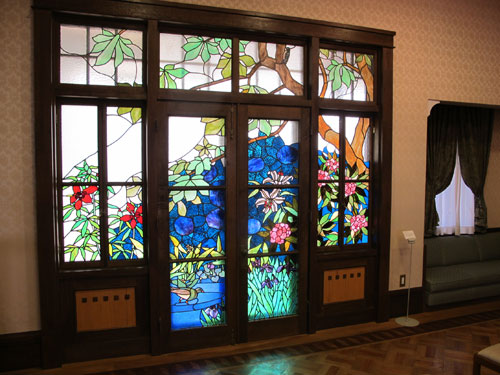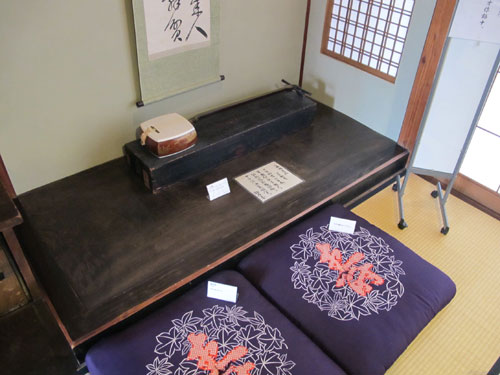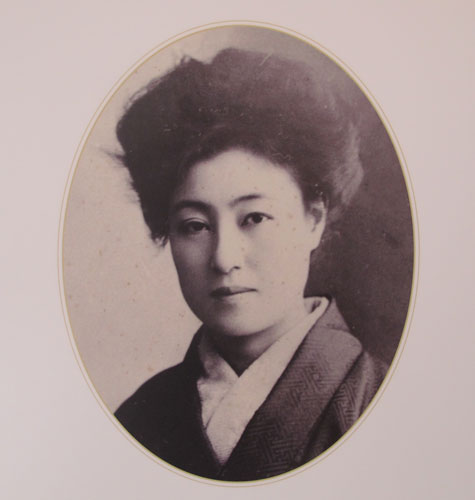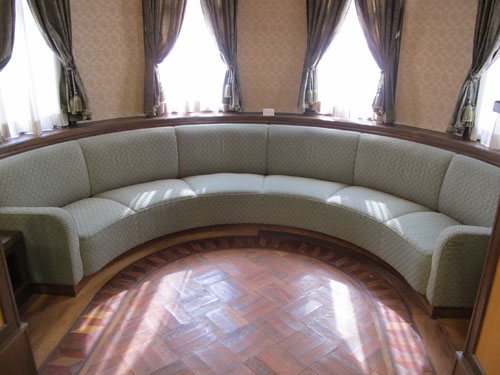Futaba Museum Former House of Sadayakko Kawakami
Futaba Museum Former House of Sadayakko Kawakami 文化のみち二葉館
The Futaba Museum, the former two-story house and garden of actress Sadayakko Kawakami and industrialist Momosuke Fukuzawa, is the highlight of Nagoya's "Cultural Path" which runs from Nagoya Castle to Tokugawa Art Gallery and Tokugawa-en.
History
Sadayakko Kawakami (1871-1946), a former geisha, is known as the "first modern actress in Japan." She is credited with introducing Japanese dance and theater to the West on tours of the US and in a sensational appearance at the Paris World Exposition in 1900. Sadayakko (Sada Yacco) was known by such people as Pablo Picasso and helped to spread an interest in "Japonism" so popular at the time.
After the death of her first husband and mentor, the actor Otojiro Kawakami, Sadayakko (aka Sada Yacco) lived with her lover, the rich businessman Momosuke Fukuzawa (1868–1938) in the house in Nagoya which is now the Futaba Museum. Fukuzawa made his fortune in the production of electricity including hydro-electricity plants on the Kiso River in Gifu Prefecture, including the so-called Momosuke Bridge in Nagiso and the dam at Ena Gorge in Ena.
Architecture
The residence is known for its mix of Japanese and western styles including Japanese tatami-style rooms, exquisite furniture and western stained glass. The house became a salon where important poets, writers and business people would meet. Futaba Museum contains a number of exhibits and panel displays detailing Sadayakko's life as well as materials relating to various authors active in the period: Shoyo Tsubouchi, Saburo Shiroyama, Tsuyoshi Kotani, Miyoshi Enatsu and Ken Kasugai. Lesley Downer's book, Madame Sadayakko: The Geisha Who Bewitched the West, is the authoritative narrative of Sadayakko's life.
Nagoya's Cultural Path Attractions
Other places to see on the Cultural Path include Nagoya City Hall, the Hori Art Museum, Nagoya City Archives, the Aichi Prefectural Building, the Chikaramachi Catholic Church, the Shumokukan, home of Tamesaburo Imoto, as well as the former residence of Sasuke Toyoda, Kenchuji Temple, the residence of Tetsujiro Haruta and the Nagoya Ceramics Hall.
The Cultural Path runs through a prosperous, residential district home to the rich and powerful of Meiji and Taisho-era Nagoya including the Toyoda family who founded the present-day Toyota car company, artists, merchants, bankers and writers.
Hours & Admission
Futaba Museum 3-23, Shumoku-cho Higashi-ku Nagoya 461-0014 Tel: 052 936 3836 Hours: 10 am-5 pm; closed Mondays Admission: 200 yen
Access - Getting There
Futaba Museum is a 10-minute walk north of Exit 2 of Takaoka Station on the Sakuradori Line of the Nagoya subway, a short walk from the Bunka no Michi Futabakan stop of the Meguru tourist Loop bus. It is also 12 minutes south from Amagasaka Station on the Meitetsu Seto Line, as well as a short walk from Shimizu-guchi bus stop on the route of Key Route Bus #2. Google map of Futaba Museum
Other Museums in Nagoya
The Futaba Museum, the two-story house of actress Sadayakko Kawakami and industrialist Momosuke Fukuzawa, is the highlight of Nagoya's Cultural Path.





















